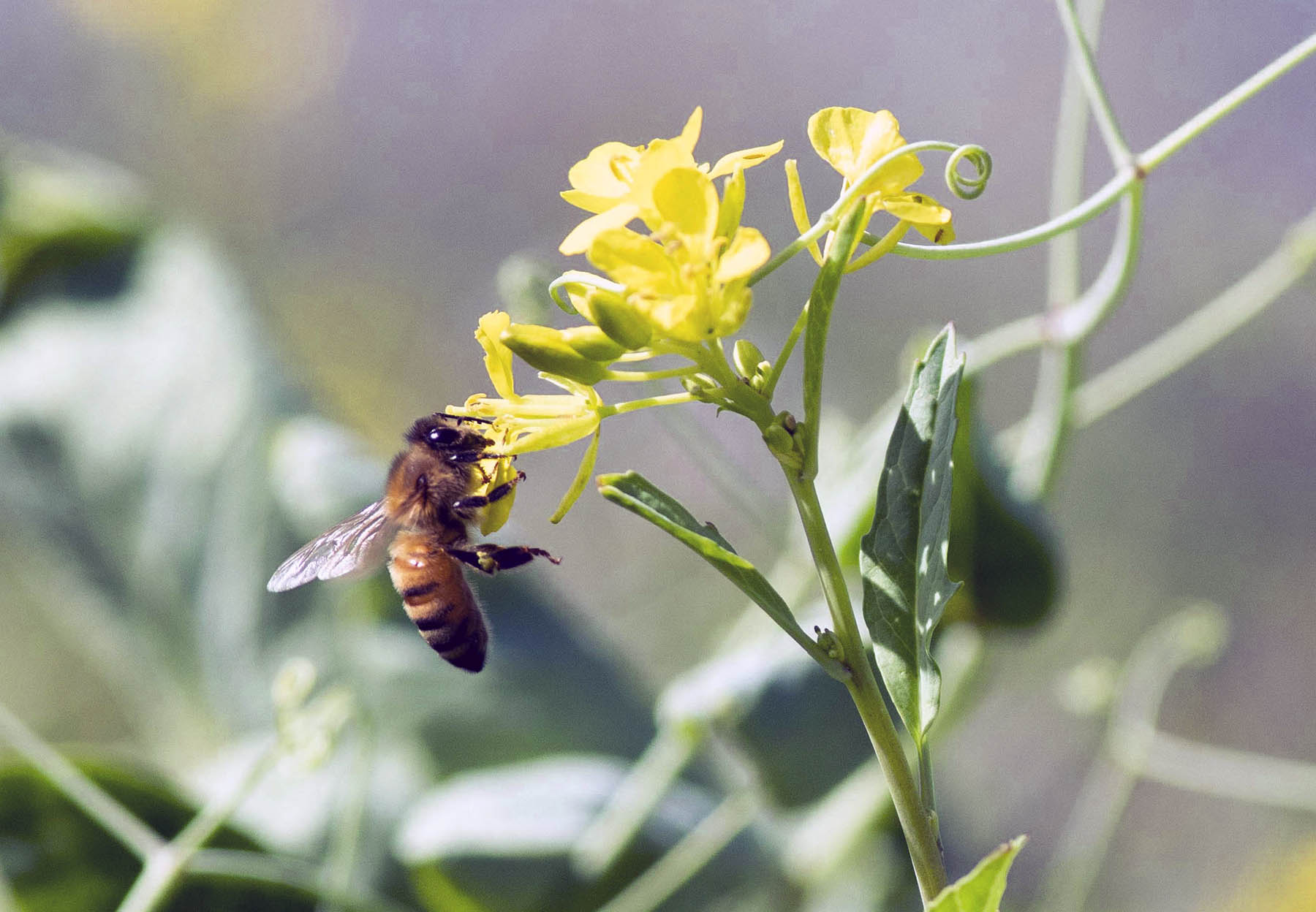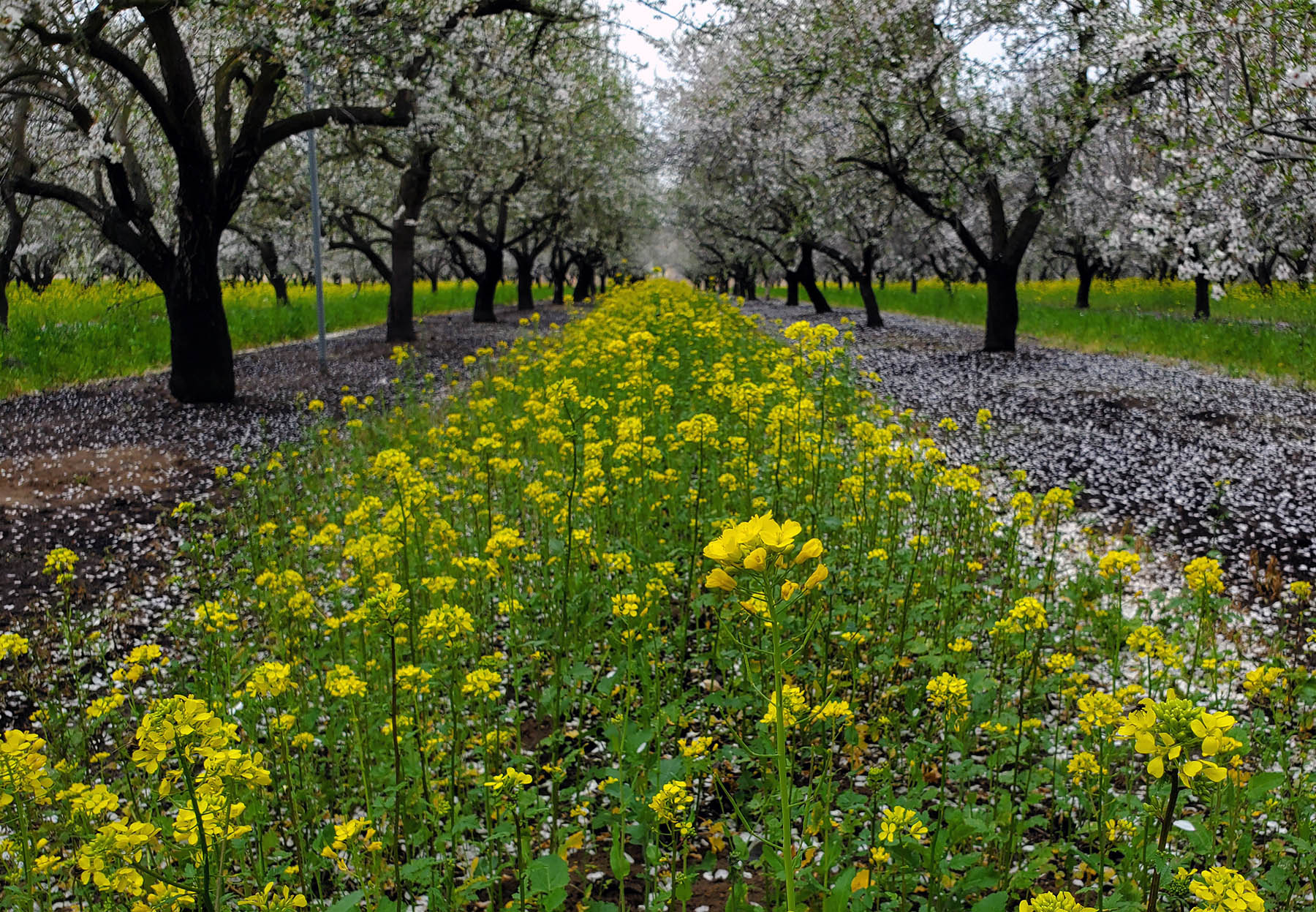
Let Bees Help You Go Into the Future Better Than Ever
by CRARS staff member Sheryl Karas. M.A.

Photograph courtesy of Project Apis m.
This year’s Seeds for Bees program through Project Apis m. has an ambitious goal: to plant 15,000 acres of bee-friendly cover crop in what farmers in California are saying has been one of the most challenging years they have ever experienced. Both growers and beekeepers are coping with multiple issues that run the gamut from economic (supply chain issues, inflation, and transportation costs) to agronomic (water availability, quality, and price). It would seem counterintuitive to invest in adding anything to a property at this time. But CRARS mentor-farmer and Project Apis m.’s Director of Habitat Programs Rory Crowley(opens in new window) disagrees.
“Last year was tough, this year is even tougher,” Rory says. “In every way possible, growers and beekeepers are being pressed to their limits, and that is why cover crop is so important. That is why Seeds for Bees is so important.” Crowley believes that the drought and economic pressures actually demands more cover crop to be planted and the latest research(opens in new window) backs his opinion up. Regenerative practices like cover crops and bee habitat not only make a difference; over time, growers can see significantly more profit.
This is especially true for bee-dependent almond producers like Rory Crowley—the research linked to above showed that regenerative almond growers who use more than one practice saw double the profit than conventional growers. Crowley has been participating in studies related to cover crops with help from researchers from Chico State and UC Davis. He has definitely seen the crops attract more bees, but he is even more excited about improvements in soil water penetration and water-holding capacity. That means he can spend less money on irrigation and has fewer worries about drought restrictions. He has also been saving money by not having to flatten the ground for harvest after flooding from the river that borders one side of the orchard. The cover crops hold the soil in place and reduce the damage. Crowley has always made a point of saying that “To be green, you still have to make the green.” Making money is essential and that’s why he now advocates for cover crop and bee habitat—he has seen the importance of these choices at Nicolaus Nut Company(opens in new window).
The Seeds for Bees Program Makes It Easy
“We are doing absolutely everything at Project Apis m. to help—giving away more, negotiating for better pricing on seed, and creating easy-to-use tools that growers can look at quickly and understand what to do and how to do it, like our new Management Quick Guide(opens in new window),” Crowley said.
First and second year participants get free seed to help them get started and can buy more at discounted prices with free shipping. $2500 in free seed is offered to first-year participants and $1500 for second-year participants. The seed mixes available are designed to bloom at critical times of the year when natural forage is scarce but managed and native bees are active.
The Seeds for Bees program open enrollment launched in California in June and is open for three months until August 31st. Apply now.(opens in new window)
Learn more at www.ProjectApism.org/Seeds-For-Bees(opens in new window)

Bee-friendly cover crops in Ken Rapp's orchard, photograph courtesy of Project Apis m.
